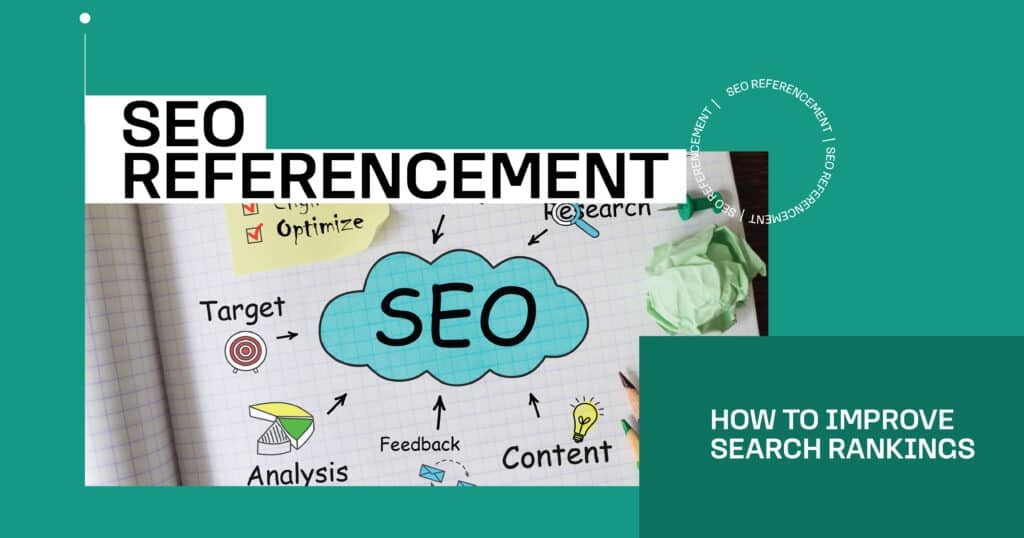Your website is the cornerstone of your digital success, and SEO referencement is the engine that drives customers to it. As a dedicated entrepreneur, you’re eager to grow your business by attracting the right audience through effective marketing.
At BloomHouse Marketing, we’re here to empower you with a deep dive into what is search engine optimization, practical steps for how to SEO optimize your website, and strategies to avoid pitfalls and stay ahead of trends. This comprehensive guide will equip you with the knowledge to boost your search rankings and build a thriving online presence.
What Is SEO Referencement?
SEO referencement, or search engine optimization, is the art and science of enhancing your website to rank higher on search engines like Google, Bing, or Yahoo. It’s about ensuring your site appears when potential customers search for your products or services, making it a vital tool for business growth. According to HubSpot, businesses leveraging SEO can achieve conversion rates of up to 14.6% from organic traffic, far surpassing traditional marketing methods. By understanding how does search engine optimization work, you can transform your website into a magnet for qualified leads.
The Basics of Search Engine Optimization
SEO is built on three foundational pillars:
- On-page SEO. Optimize content, keywords, and meta tags to align with user queries.
- Off-page SEO. Build backlinks and establish brand authority through external signals.
- Technical SEO. Ensure fast load times, secure connections, and easy crawlability for search engines.
These pillars work in harmony to create a seamless experience for both users and search algorithms, laying the groundwork for higher rankings. For example, a local bakery might optimize its homepage with keywords like “fresh pastries near me” while securing backlinks from local food blogs to boost credibility.
| SEO Pillar | Key Components | Impact on Rankings |
| On-page SEO | Keywords, meta tags, content quality | Enhances relevance and user engagement |
| Off-page SEO | Backlinks, social mentions | Builds authority and trust |
| Technical SEO | Site speed, mobile-friendliness, HTTPS | Improves accessibility and user experience |
How Does Search Engine Optimization Work?
Search engines use complex algorithms to evaluate and rank websites based on hundreds of factors, including relevance, authority, and user experience. When a user searches “how can I optimize my website for search engines,” Google analyzes keyword usage, site structure, backlinks, and performance metrics to deliver the most relevant results. Search Engine Journal reports that 75% of users never venture beyond the first page of search results, underscoring the importance of SEO. By optimizing your site to meet these criteria, you increase its visibility and attract more clicks.
The process begins with crawling, where search engine bots scan your site’s pages. Next, indexing stores your content in a searchable database. Finally, ranking determines your position based on how well your site matches the user’s query. Factors like mobile-friendliness, page speed, and content quality play significant roles. For instance, a slow-loading site risks losing visitors, while keyword-rich, high-quality content keeps them engaged.
How to SEO Optimize Your Website
Knowing how to SEO optimize your website is critical for climbing search rankings. This requires a strategic blend of on-page, technical, and user-centric optimizations that signal quality to search engines and delight your visitors.
On-Page and Technical SEO Essentials
On-page SEO focuses on elements within your control:
- Keyword integration. Place “SEO referencement” in titles, H1/H2 headings, and body text at a 1–2% density.
- Meta tags. Craft meta titles (50–60 characters) and descriptions (150–160 characters) with keywords like “how to SEO optimize your website.”
- URL structure. Use clean, descriptive URLs (e.g., /SEO-referencement-guide).
- Content quality. Write in-depth, value-driven content that answers user questions.
Technical SEO ensures your site is search-engine-friendly:
- Secure connections. Use HTTPS to protect user data.
- Sitemaps. Submit an XML sitemap to Google Search Console.
- Structured data. Implement schema markup for rich snippets like FAQs or reviews.
These steps make your site both discoverable and appealing, as noted by Forbes, which highlights that technical SEO can boost rankings by up to 20%.
Mobile Optimization and Page Speed
Mobile optimization is a must, with over 60% of searches occurring on mobile devices. Google’s mobile-first indexing evaluates your site’s mobile version first, so ensure responsive design that adapts to all screen sizes.
Page speed is equally critical – pages loading in under 3 seconds retain 90% of visitors, per Google data. Compress images, minify CSS/JavaScript, and use a content delivery network (CDN) to accelerate load times. Tools like Google PageSpeed Insights and GTmetrix can identify bottlenecks.
| Optimization Area | Best Practice | Tool to Use | Expected Benefit |
| Mobile Optimization | Responsive design | Google Mobile-Friendly Test | Higher mobile rankings |
| Page Speed | Compress images, use CDN | Google PageSpeed Insights | Lower bounce rates |
| Technical SEO | XML sitemap, HTTPS | Screaming Frog | Better crawlability |
Useful Search Engine Optimization Strategies
Useful search engine optimization strategies include content creation, link-building, and data-driven analytics to maintain and grow your rankings over time. These approaches ensure your site remains competitive and relevant.
Content Creation and Backlink Building
Content is the backbone of SEO. Develop blog posts, videos, case studies, or infographics targeting keywords like “what is search engine optimization.” For example, a 2,000-word guide on “how does search engine optimization work?” can attract readers and earn shares. Backlinks from authoritative sites amplify your credibility – reach out to industry publications or local directories for guest posts or mentions. A single high-quality backlink can increase domain authority by 5–10 points, per Moz.
Backlink strategies include:
- Guest blogging. Write for reputable sites in your niche.
- Resource pages. Get listed on “best of” or industry resource lists.
- Broken link building. Replace dead links on other sites with your content.
Quality trumps quantity – focus on relevant, high-authority sites.
Using SEO Tools and Analytics
SEO tools provide insights to refine your strategy:
- Google Analytics. Monitor traffic sources, bounce rates, and conversions.
- Ahrefs/SEMrush. Research keywords, track rankings, and spy on competitors.
- Google Search Console. Identify indexing issues and optimize click-through rates.
Set up monthly reports to track KPIs like organic traffic growth or keyword rankings for “how can I optimize my website for search engines.” Data-driven adjustments keep your strategy sharp and effective.
| Tool | Primary Use | Key Feature | Cost |
| Google Analytics | Traffic analysis | Real-time data | Free |
| Ahrefs | Keyword research | Backlink checker | $99+/month |
| Search Console | Site performance | Index coverage | Free |
Common SEO Mistakes to Avoid
Mistakes can derail even the best SEO efforts. Steer clear of these common errors:
- Keyword stuffing. Overloading “SEO referencement” makes content unreadable and risks penalties.
- Neglecting mobile. Non-mobile-friendly sites lose rankings and users.
- Ignoring analytics. Skipping data analysis leads to missed opportunities.
- Thin content. Short, low-value pages fail to engage or rank well.
- Duplicate content. Copying text across pages confuses search engines.
Prioritize user experience and quality to build trust with both visitors and algorithms.
SEO Trends to Watch in 2025
SEO is ever-changing, and staying ahead ensures your business thrives. In 2025, key trends include:
- AI-driven search. Google’s AI Overviews favor conversational, in-depth content.
- Voice search optimization. Target long-tail phrases like “how does search engine optimization work” for Siri or Alexa queries.
- E-E-A-T emphasis. Google prioritizes Expertise, Authoritativeness, and Trustworthiness, per Search Engine Land.
- Video SEO. Optimize video content for YouTube and Google’s video carousels.
To adapt, create expert-led content, use schema markup, and test voice-friendly keywords. These trends position your site for future success.
| Trend | Action Item | Expected Benefit | Priority Level |
| AI-driven search | Use natural language | Better query matching | High |
| Voice search | Target long-tail phrases | Higher voice rankings | Medium |
| E-E-A-T | Showcase credentials | Improved trust signals | High |
| Video SEO | Optimize video metadata | More video visibility | Medium |
Let BloomHouse Marketing Boost Your SEO
Running a business is demanding, and SEO shouldn’t add to your stress. At BloomHouse Marketing, we’re passionate about helping entrepreneurs like you master useful search engine optimization strategies. From crafting keyword-rich content to optimizing technical SEO, we’ll elevate your rankings and attract the right customers. Contact BloomHouse Marketing today to start building an SEO strategy that drives traffic, leads, and growth.
FAQs
What is the difference between SEO and paid advertising?
SEO builds organic traffic through optimization, taking months but costing less long-term. Paid ads offer instant visibility but require ongoing budgets.
How long does it take to see results from SEO?
SEO typically shows results in 3–6 months, depending on competition and strategy. Consistent optimization leads to sustainable growth.
Do I need to update my website content regularly for SEO?
Yes, fresh content keeps your site relevant to search engines. Aim to refresh key pages or blogs every 6–12 months.
Is SEO worth it for small businesses?
SEO is ideal for small businesses, offering high ROI by targeting local or niche audiences. It levels the playing field against larger competitors.
Can I do SEO myself, or should I hire an expert?
Basic SEO is doable with time and learning, but experts deliver faster, better results. An agency like BloomHouse Marketing maximizes your ROI.









